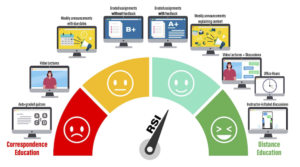Hyperlink text is descriptive and makes sense when out of context (avoid using “click here”). Review These Explanations Not all learners are using…
Text, graphics, and images are understandable when viewed without color. Text should be used as a primary method for delivering information. Review These Explanations …
A text equivalent for every non-text element is provided (“alt” tags, captions, transcripts, etc.), and audio description is provided for video-only content. Review These Explanations…
Text content is available in an easily accessed format, preferably HTML. All text content is readable by assistive technology, including a PDF or any text…
Course materials and resources include copyright and licensing status, clearly stating permission to share where applicable. Review These Explanations Instructors need to be…
Where available, Open Educational Resources, free, or low cost materials are used. Review These Explanations SUNY/SUNY Online is committed to using low cost…
Course provides activities that emulate real world applications of the discipline, such as experiential learning, case studies, and problem-based activities. Review These Explanations …
Course provides activities for learners to develop higher-order thinking and problem solving skills, such as critical reflection and analysis. Review These Explanations Cognitive…
Course offers access to a variety of engaging resources to present content, support learning and collaboration, and facilitate regular and substantive interaction with the instructor.…





